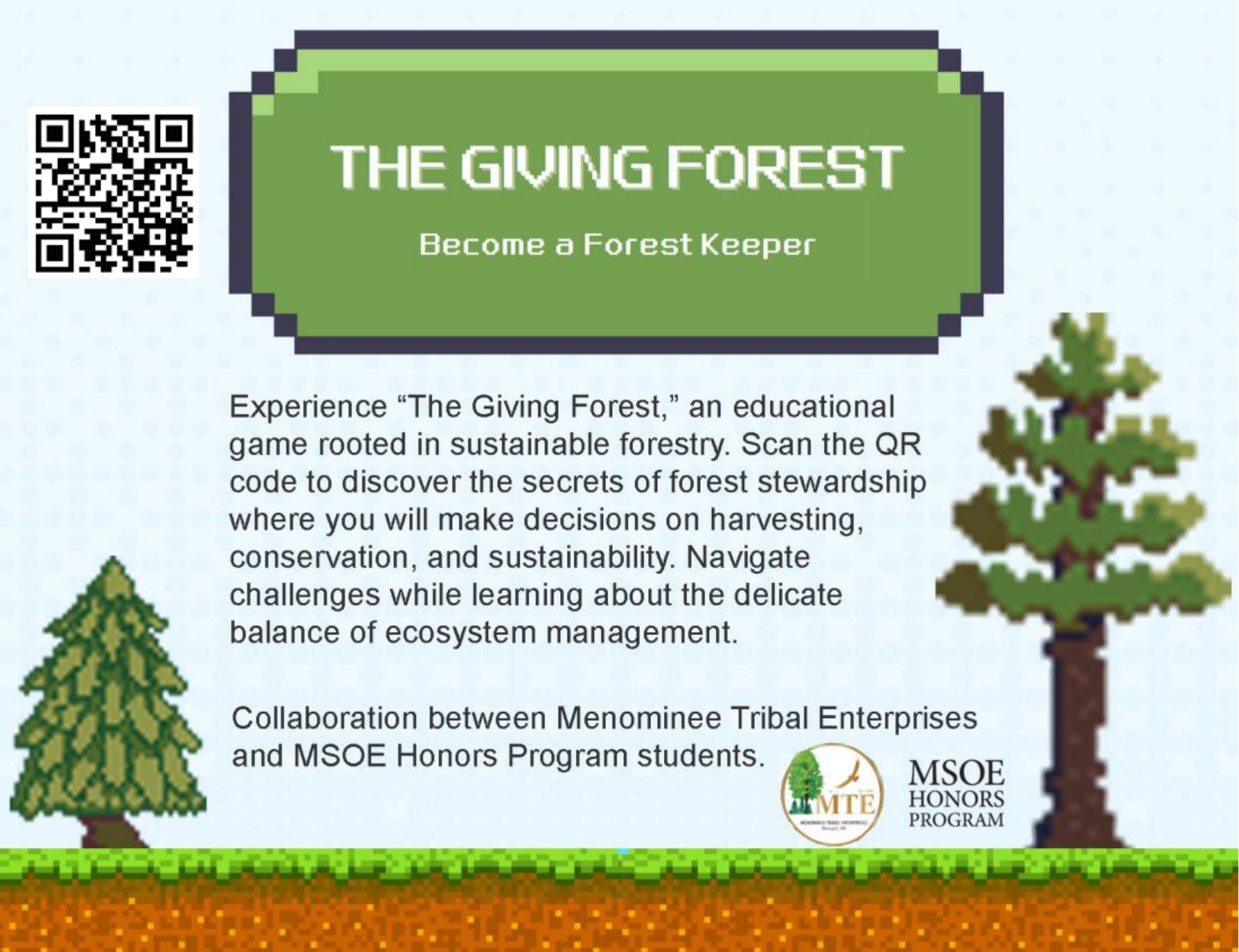Forest Management Plan
Forestry >> Forest Management Plan
Sustainable Forest Management at MTE
View MTE's Forest Management Plan (PDF)
The Menominee Forest is managed using sustained-yield techniques across a wide range of different forest cover types, habitat niches, and age classes. The objectives of management include both timber and non-timber resources.
The variety of forest communities, species, and habitats directly impact the types of treatments performed to improve, maintain, and in some cases, change the structure and composition of the forest. Consequently, MTE utilizes different management techniques in pursuit of these goals and strategies.
The goal of forest management is to provide for maximum diversity in the forest (species composition, age class distribution, structural diversity both within and between stands), habitat diversity, and to optimize growth and saw log quality of the forest timber resource.
Forest Management Strategies
- Developing and refining sustained-yield silviculture prescriptions to achieve the stand objectives that meet these goals
- Following the guidelines established by the Kotar Habitat Typing system to match tree species to site-specific plant association habitat types
- Managing the forest to achieve long-term forest cover type targets
- Managing the forest to accomplish landscape-scale objectives that maximize diversity across larger scales
- Managing the forest within the constraints of the Annual Allowable Cut (AAC)
- Establishment and maintenance of short- and long-term inventory systems to ensure forest growth, yield, and coverage reflect the intended results of sustained-yield forestry
- Continue working with researchers and other agencies to carry on developing and refining prescriptions to achieve management goals
MTE has been responsible stewards of the Menominee Forest to get optimal timber yields of FSC certified wood -- Contact us to place an order or learn more.
The Art of Forest Management
silviculture:
noun sil·vi·cul·ture \ˈsil-və-ˌkəl-chər \: a branch of forestry dealing with the development and care of forests
Silviculture is the art and science of controlling the establishment, growth, composition, health, and quality of forests to meet the goals and strategies of the Menominee people. A silvicultural prescription is a written document describing the objectives of the harvest treatment and the manner in which it will be carried out.
All prescriptions follow the standards and guidelines presented in the Forest Management Plan and supporting documents. A silvicultural system is a specific technique used to modify the forest stand to meet the objectives of the prescription. In most cases, silviculture strives to mimic the natural conditions occurring in forests.
Considerations for Sustainable Forest Management
Some of the key considerations in the selection of a silvicultural system include:
- Shade Tolerance – the level of light the forest structure requires to thrive
- Age Distribution – the age range of specimens within a group
- Forest Stand Structure – structures change from group to group depending on disturbances, distribution, and growth; these can range from open savanna types complex populations with dense understories
- Forest Stand Condition – the overall health of each forest stand is carefully considered before actions are attempted
The two primary types of silviculture performed on Menominee are even-aged and uneven-aged management.
Even-aged management promotes the development of tree species intolerant of shade. These species naturally rely on disturbance (wind or fire) to become established on a site. In the absence of natural disturbance, foresters can mimic these conditions with different harvesting and site treatment techniques (e.g. group openings, clear cuts, and shelterwood harvests).
Uneven-aged management promotes the development of shade tolerant species through single-tree selection cuts. Follows most current silviculture prescriptions based on the newest forestry research on species regeneration.







